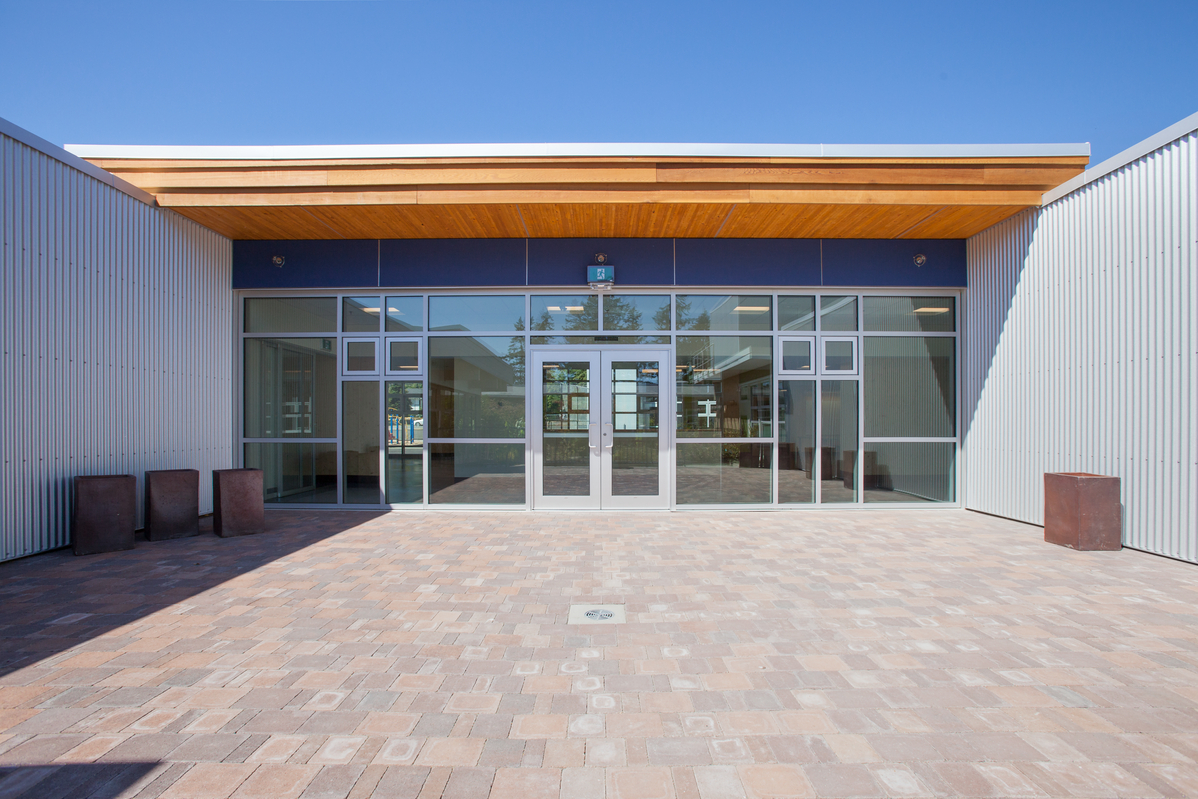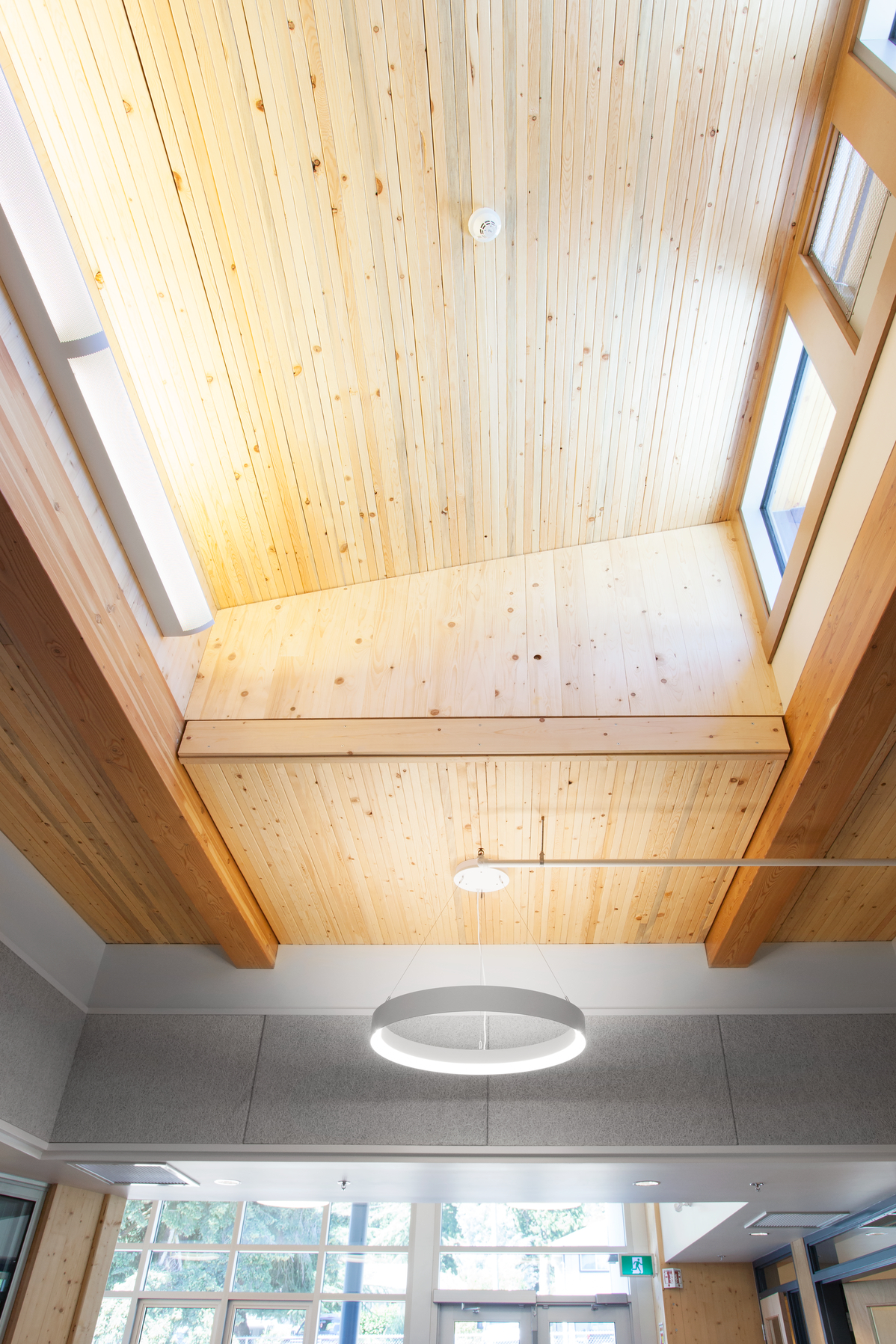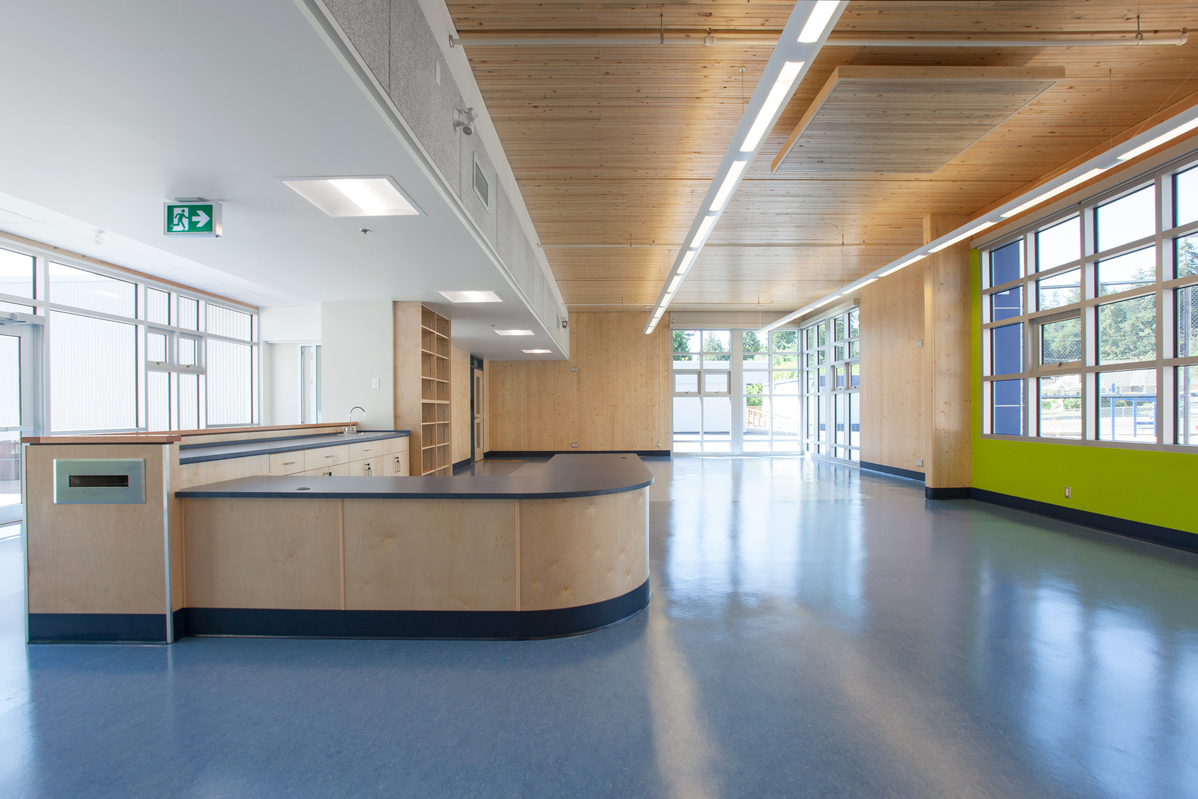Ample use of wood make for a beautiful, safe learning environment
The seismic upgrade to Cordova Bay Elementary School, in Victoria, demonstrated the cost benefit and timeline efficiency of building schools with wood.
- Mass timber and prefabricated panelized wood building systems allowed for the multi-phase demolition and reconstruction during the school year.
- A mix of nail-laminated timber (NLT) and cross-laminated timber (CLT) reduced costs and delivered stability, structural efficiency, and crucially, seismic performance.
- The school was the first to be built from NLT and CLT on Vancouver Island.
Mass timber construction: versatile, adaptable and quick
Instead of remodelling the one-storey school that was in need of a seismic upgrade, the School District demolished and replaced select portions of the school using a cost-effective combination of nail-laminated timber (NLT) and cross-laminated timber (CLT). The speed, versatility, adaptability and reduced noise of mass timber and prefabricated, panelized wood building systems was a boon for this multi-phase demolition and reconstruction that took place during the school year.
While they initially intended to use CLT for both walls and roof, the School District and the design team wanted to take full advantage of their mass timber product options, and so worked together to explore alternatives. They decided to combine CLT with NLT, which made more efficient, cost-effective use of mass timber and saved the District money.
The combination of the two mass timber products resulted in a structure which excels in stability and structural efficiency while providing the warm aesthetic the school wanted—all at a cost which fit their budget.
Code-compliant solution found in panelized wood
The 1,533 square-metre school was made stronger with a strategic mix of CLT walls and NLT roof panels, supported by a glue-laminated timber (glulam) post-and-beam primary structure. The building accommodates a four-classroom wing, library and computer lab, seminar rooms and multi-purpose spaces. Sliding partitions provide flexibility for classroom sizes, and a corridor extends to an outdoor courtyard that doubles as a teaching space when the weather is warm. The structural efficiency and seismic performance of the mass timber construction are essential in the region, which is prone to earthquakes.
Expansive airtight glazing provides students and teachers with plenty of natural daylight and is complemented by the warmth of exposed wood throughout. Beyond aesthetics, the generous use of visible wood delivers added thermal and acoustic benefits. Overall, the project showcases how schools can take advantage of wood to construct beautiful, affordable, and safe learning environments that can serve their communities for decades to come.



